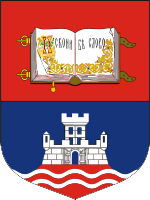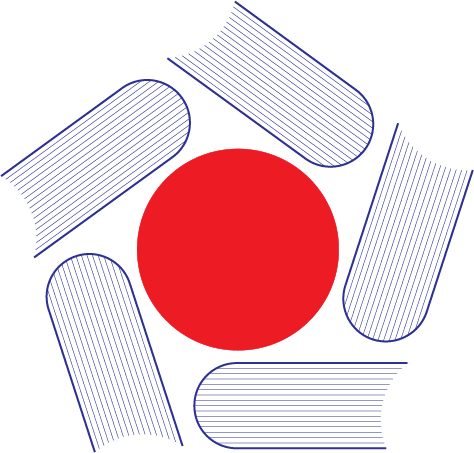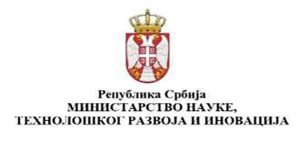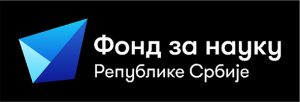Renewable energy
SOLAR CELLS
Solar energy is inexhaustible, the cleanest and most common of all renewable energy sources, while one of the most elegant technologies available for its efficient use is photovoltaic technology. Respecting modern research trends in the field of renewable energy sources, the Center for Green Technologies conducts research aimed at studying and developing the latest generation of solar cells.
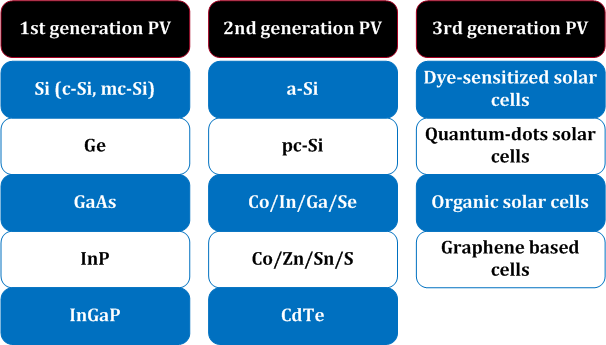
One direction of our research is based on the synthesis, characterization and processing of nanostructured titanium(IV)-oxide for use in solar cells with photosensitive dye (dye-sensitized solar cells). This type of cell is an alternative to conventional and commercialized devices based on crystalline and amorphous silicon, cadmium telluride and pseudo-ternary compounds of copper, indium, gallium and selenium.
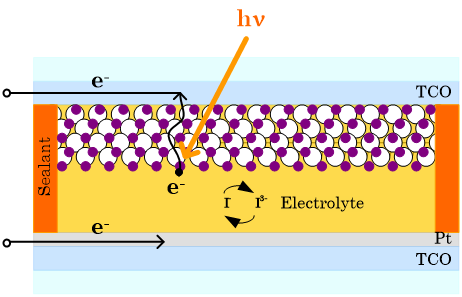
On the other hand, from the aspect of renewable and clean energy, one of the most important applications of solar cells is their use as photovoltaic materials integrated into buildings (building integrated photovoltaics, BIPVs). Using BIPVs, buildings are transformed from consumers into energy producers, with the ultimate goal of building an energy efficient building that would produce electricity using solar cells integrated into the building envelope (roof, facade, skylights, sunshades, canopies, domes, etc.). A group of researchers from the Institute for Multidisciplinary Research is developing new BIPVs materials, which are used in the upgrade of light and decorative building elements, such as plasticized aluminum sunshades.
Previous research in the field of solar cells has been realized through the following projects:
PROJECTS:
“0-3D nanostructures for application in electronics and renewable energy sources: synthesis, properties and processing”, Ministry of Education, Science and Technological Development of the Republic of Serbia (2011-2020), project manager Dr. Goran Brankovic.
2020-2022. Proof of concept no. 5706, “Aluminum sunshades with photovoltaic characteristics”, project manager: Dr. Katarina Vojisavljević, financing: The Innovation Fund of the Republic of Serbia.
2019-2020. Innovation voucher no. 538, “Testing of modification of materials for plasticization of Al-profiles for obtaining photovoltaic coating”, project manager: Katarina Vojisavljević, PhD, financing: The Innovation Fund of the Republic of Serbia.
Within the Laboratory of the Department of Materials Science, a complete experimental line for the production of solar cells with photosensitive dye has been developed, which enables various synthetic procedures and techniques for applying thick films, and their photovoltaic characterization. Thanks to that, cooperation with other scientific research organizations and economic entities has been developed, and the results of the research have been presented in international journals and at many international conferences:
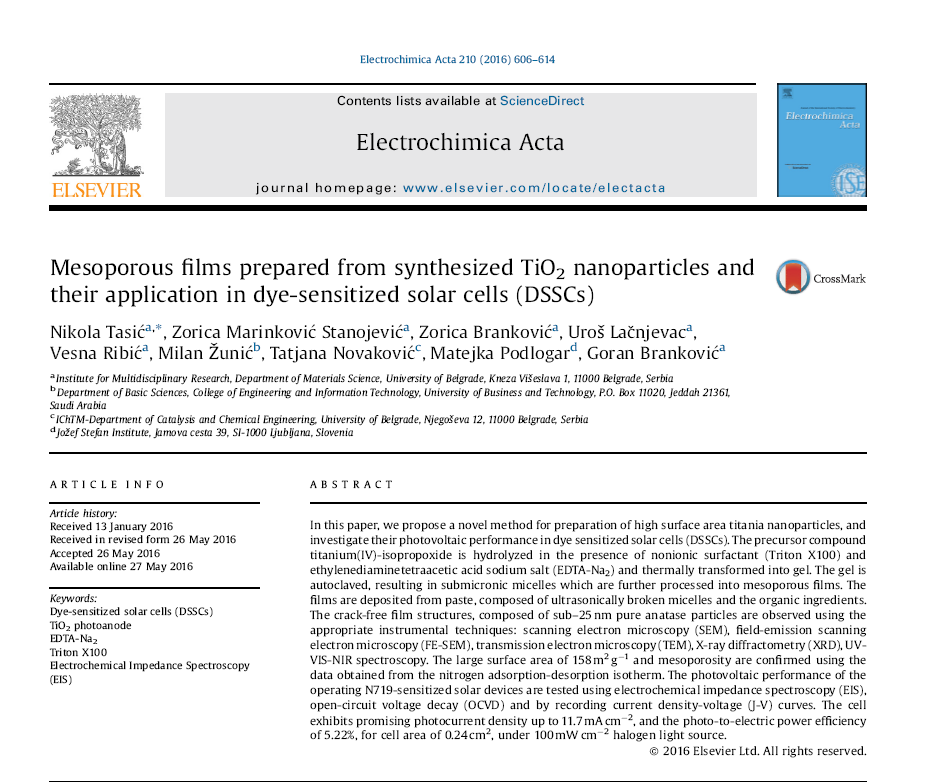
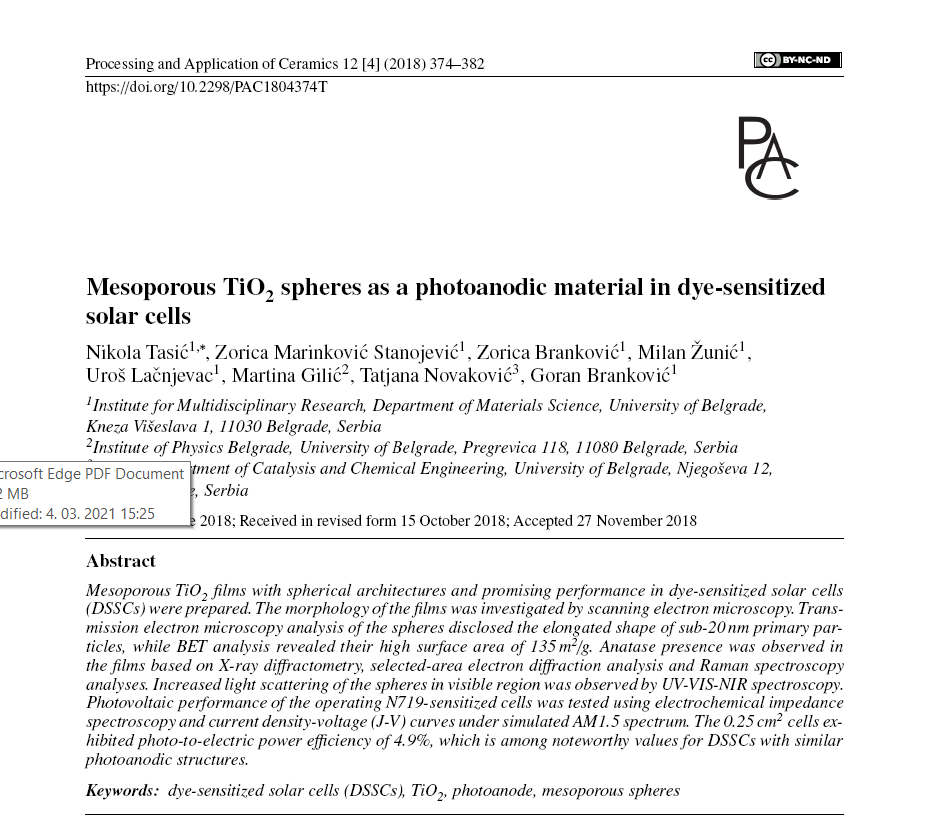
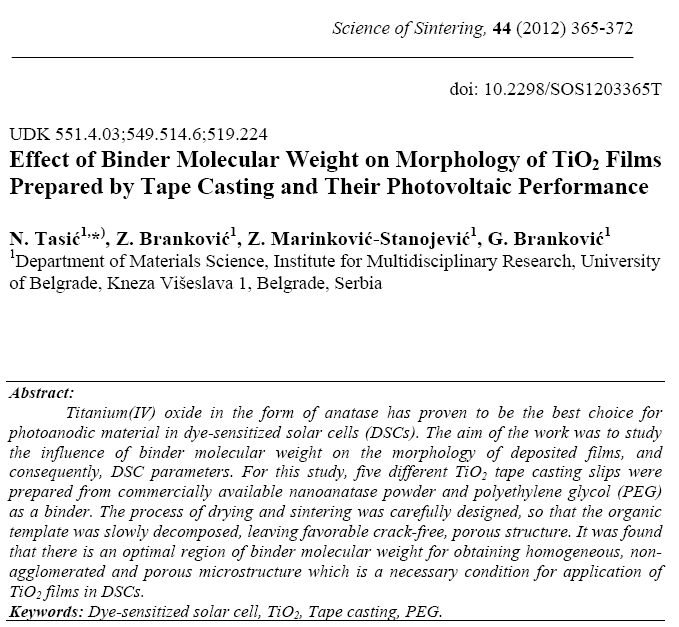
Matovic L., Tasic N., Trisovic N., Ladarevic J., Vitnik V., Vitnik Z., … & Mijin D. (2019). On the azo dyes derived from benzoic and cinnamic acids used as photosensitizers in dye-sensitized solar cells. Turkish Journal of Chemistry, 43(4): 1183-1203. doi:10.3906/kim-1903-76
Lojpur V., Tasić N., Validžić I. (2017) Different behaviors in current–voltage measurements of undoped and doped Sb2S3-based solar cells, Journal of Applied Electrochemistry 47: 117-124. https://doi.org/10.1007/s10800-016-1025-2
Dj Jovanović, T.Tomašević, A. Matković, M. Musić, N.Tasić, M.Spasenović, and R Gajić, Low light low cost solar cells, 3rd International School and Conference “Saint Petersburg OPEN 2016” on Optoelectronics, Photonics, Engineering and Nanostructures, pp. 231, St.Petersburg, Russia, 28-30. March, 2016
Djordje Jovanović, Tijana Tomasević, Aleksandar Matković, Nikola Tasić, and Radoš Gajić, Low light solar cells, 13th International Conference on Nanoscience and Nanotechnologies (Nanotexnology 2016), pp. 289, Thessaloniki, Greece, 2-9. July, 2016
Djordje Jovanović, Tijana Tomašević-Ilić, Nikola Tasić, Aleksandar Matković, Marko Spasenović, Radoš Gajić, and Emmanuel Kymakis, Silicon going indoor, 1st International Conference on Nanotechnologies and Bionanoscience (NanoBio 2018), pp. 119, Heraklion, Crete, Greece, 24. – 28. Sep., 2018
Djordje Jovanović, Miloš Petrović, Tijana Tomašević-Ilić, Nikola Tasić, Konstantinos Rogdakis, Dragan Knežević, Aleksandar Matković, Marko Spasenović, Stanko Nedić, Radoš Gajić, Ivana Milošević and Emmanuel Kymakis, Is solar going indoors?, 14th Photonics Workshop (2021), pp. 38-39, Kopaonik, Serbia, 14-17. March, 2021
Djordje Jovanović, Miloš Petrović, Tijana Tomašević-Ilić, Nikola Tasić, Konstantinos Rogdakis, Lucio Cinà, Dragan Knežević, Aleksandar Matković, Marko Spasenović, Radoš Gajić, Ivana Milošević and Emmanuel Kymakis, Is solar going indoors?, “Graphene and 2DM” Online Conference (GO2021): Fundamental Research Insights, pp. 73-74, 20-21.April, 2021
